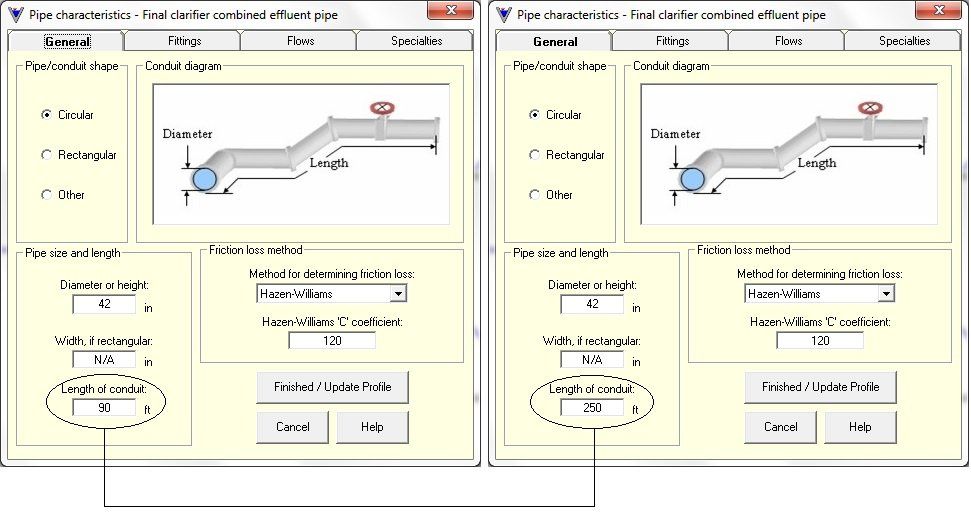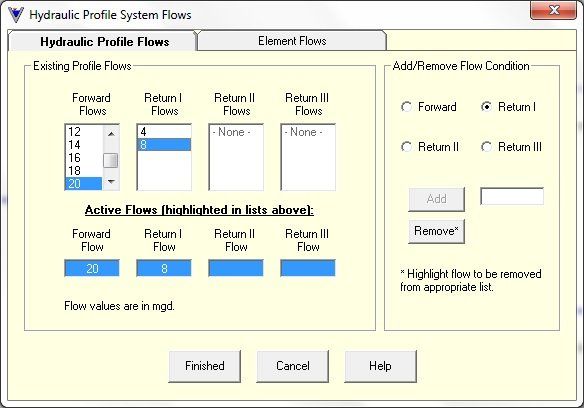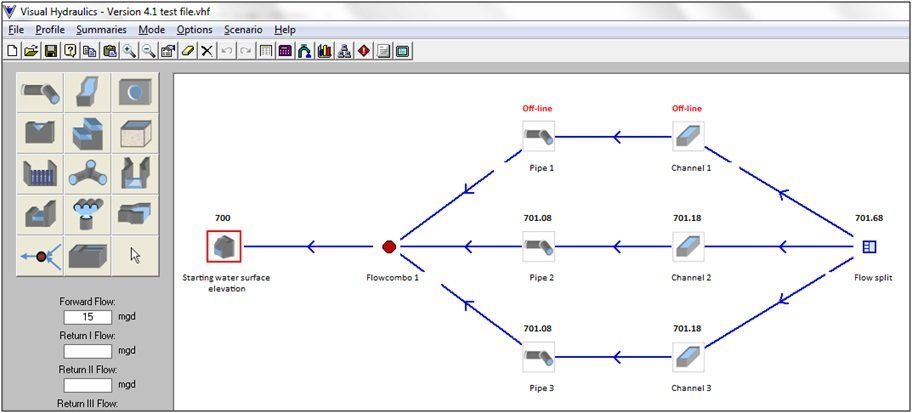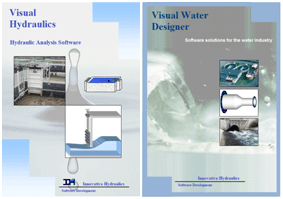One
of the most painstaking tasks of analyzing a hydraulic profile
is having to re-analyze everything if there is a design change
or simply even a flow change. Hydraulic profiles are
subject to the "ripple effect" - if something is
changed, that change can affect many or all of the hydraulic
profile upstream of that point. This is where the use of
hydraulic modeling can substantially save time and money.
If you have a design change, simply change it in the model, and
the hydraulic profile will be recalculated for you.
Altering
a hydraulic profile can include simple modifications, such as
changing a pipe length, to major changes, such as inserting a
section between two existing sections or deleting a section of
the profile. In any case, even simple changes can have
dramatic affects. These changes can be simply accounted
for by using all of Visual Hydraulic's built-in editing features.
Changes
during design are commonplace. Easily edit any features of
an existing section of the hydraulic profile:

Overlook
a section of the profile or is something added during
design? Use Visual Hydraulic's insert feature to put a new
section between any two existing sections of the hydraulic
profile:

Change
flow conditions simply with the click of a mouse. Visual
Hydraulic's flow database holds any amount of design flows you
wish, including options for having up to three different return
flow scenarios. Switch between any of your design flows
and the entire hydraulic profile will be recalculated.
Easily ensure your design meets any variety of flow conditions:

Have
multiple parallel trains on-line and want to know what will happen to the
hydraulic profile if a train is taken off-line? No
problem. One of the biggest improvements of Visual Hydraulics
4.2 is the ability for the user to design multiple parallel
trains that are completely independent of one another, and at
any time be able to take trains off-line and route the flow
through the remaining trains. The new flow split and flow
combination elements make this process simple and manageable,
offering more flexibility than ever with the click of a mouse:

